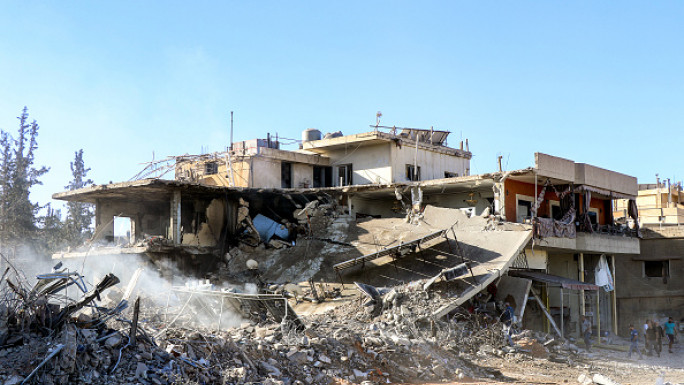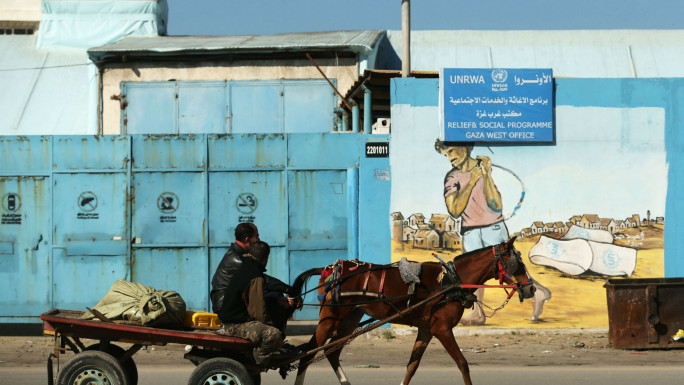
Yemen: Unfiltered neoliberalism has worsened the water crisis: Part I
Yemen is currently suffering from a six-year disastrous war, alongside a major water crisis, which will impact its people's ability to survive in the country long after the military conflict ends.
Yemen's current renewable annual water availability of 72m squared. This is below the 500m squared "absolute scarcity" indicator on the internationally recognised Falkenmark scale, and far below the far higher "stress" marker of the FAO.
As its population continues to increase at a rate close to 3% per annum, per capita water availability is dropping. Furthermore, Yemen's water resources will likely also be negatively impacted by climate change.
The objective situation is dire, and the neoliberal policies of the Ali Abdullah Saleh regime (1978–2011) and international development financiers have significantly worsened it and increased inequality.
This article focuses on rural water usage, and in particular the role of agricultural policies in worsening water scarcity in the country.
"Explicit policy decisions to support diesel-operated pumps and tube well drilling technology for irrigation have enabled water extraction significantly above sustainable levels"
Like many other countries, Yemen uses 90% of its water in agriculture. About 70% of Yemen's population live in rural areas and more than half of its current population (30 million) derive a substantial part of their income from agricultural activities, including livestock herding and crop production.
This article does not cover the supply of water for domestic purposes, as that is subject to numerous and complex extraction and distribution methods, based both on the source and nature of the supply of water and on local social and political situations. These methods include individual ownership and community management strategies in rural areas, as well as larger centralised systems in cities.
Three main factors explain Yemen's water scarcity, all directly or indirectly the result of human action.
First, rapid population growth has increased demand, thus reducing per capita water and land availability over generations to well-below self-sufficient levels.
Second, climate change is manifesting through increasingly violent and irregular rainfall and other phenomena which reduce water availability, particularly by limiting the replenishment of freshwater aquifers, as the loss of topsoil prevents absorption of flows, particularly where terraces have deteriorated due to a lack of maintenance.
Third, the explicit policy decisions of political regimes in recent decades to support diesel-operated pumps and tube well drilling for irrigation have enabled water extraction significantly above sustainable levels. This has led to the expansion of agricultural areas and thus the further depletion of aquifers.
Villages are abandoned for lack of resources
The extent of water scarcity is not uniform throughout the country. Unfortunately, those areas with the highest population densities are also those with the least available groundwater, whether from renewable or fossil aquifers.
In some of the most populated areas, for example, the Sanaa and Saada basins, groundwater tables have dropped severely. In some areas, villages have been abandoned due to the complete depletion of their water tables.
Should all Yemeni water be devoted to domestic use, per capita availability would rise to 200L per day, significantly more than is needed or used in Europe (about 150L per capita per day). While it is both technically impossible and unrealistic to suggest such a fundamental redistribution of water usage, there is little doubt that Yemen's water scarcity problem has been exacerbated over recent decades through management policies that have, at best, ignored the fundamental principle of giving priority to direct human needs.
"Water scarcity has increased conflicts between communities, particularly between upstream and downstream ones"
Significant growth in irrigated areas
In the decade before the ongoing full-scale war, Yemen was annually consuming 30% more water than its renewable supply. At the time, Yemen used 3.5 billion cubic metres (bcm) of water while the renewable supply was only 2.1 bcm. The 1.4 bcm shortfall was met by water pumped using modern technology from non-renewable fossil aquifers. These figures cover all types of water use.
Although rain-fed agriculture and spate irrigation also use water, the main change leading to severe scarcity came with the introduction of pump irrigation in the 20th century.
In the past three decades, due to pumping, both shallow and deep well irrigation have contributed to the water crisis. The increase in well-irrigated surfaces has been impressive, from 37,000 hectares in the 1970s to more than 400,000 hectares in the 2000s.
During the same period, as irrigated areas increased by a factor of 15, rain-fed agriculture declined by 30% in a country where only about 3% of land is arable, including pasture land. According to the 2002 agricultural census, 25% of the 1.6 million hectares of arable land was irrigated by wells, though the data make no distinction between shallow and deep wells. This has occurred at the expense of the sustainability of aquifers and also intensified social inequality, helping to explain both the worsening water and political crises.
Water scarcity has increased conflicts between communities, particularly between upstream and downstream ones where the former's increased use has deprived the latter. As shallow wells dry up due to deep well extraction by wealthier neighbours, smallholders are impoverished and eventually forced to sell their lands.
Land distribution is extremely skewed: of Yemen's 1.2 million landholders, 58% owned a total of 8% of cultivable land in holdings of less than 0.5 hectares, while a mere 7% of owners controlled 56% of land in holdings of more than 5 hectares.
Deep wells which draw from non-renewable fossil aquifers are one of the main culprits for reducing water availability. These wells are mostly operated by the few larger landowners cultivating high-value crops such as qat, mangoes, and bananas, the latter two mainly for export. Surfaces devoted to these crops have, in the past three decades, expanded enormously at the expense of staple crops and pastureland. This has been encouraged, with no regard to sustainability, both in respect to general environmental issues and basic access to water for domestic use by the population.
This is Part I. Read Part II here.
Helen Lackner is an independent researcher who has worked and lived in Yemen for over fifteen years, five of them in the RDPY between 1977 and 1982. She has just published Yemen in Crisis, Autocracy, Neo-Liberalism and the Disintegration of a State (Saqi, 2017).
This article was originally published by our partners at OrientXXI.
Have questions or comments? Email us at: editorial-english@alaraby.co.uk
Opinions expressed in this article remain those of the author and do not necessarily represent those of The New Arab, its editorial board or staff.
![Yemen's water supply is far below "absolute scarcity" on the Fallenmark scale. [Getty]](/sites/default/files/styles/large_16_9/public/2021-06/GettyImages-1232754986_0.jpg?h=a7e7c04b&itok=EMs-6VTU)




 Follow the Middle East's top stories in English at The New Arab on Google News
Follow the Middle East's top stories in English at The New Arab on Google News


